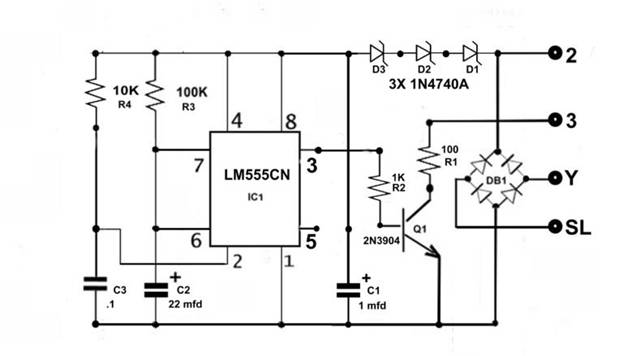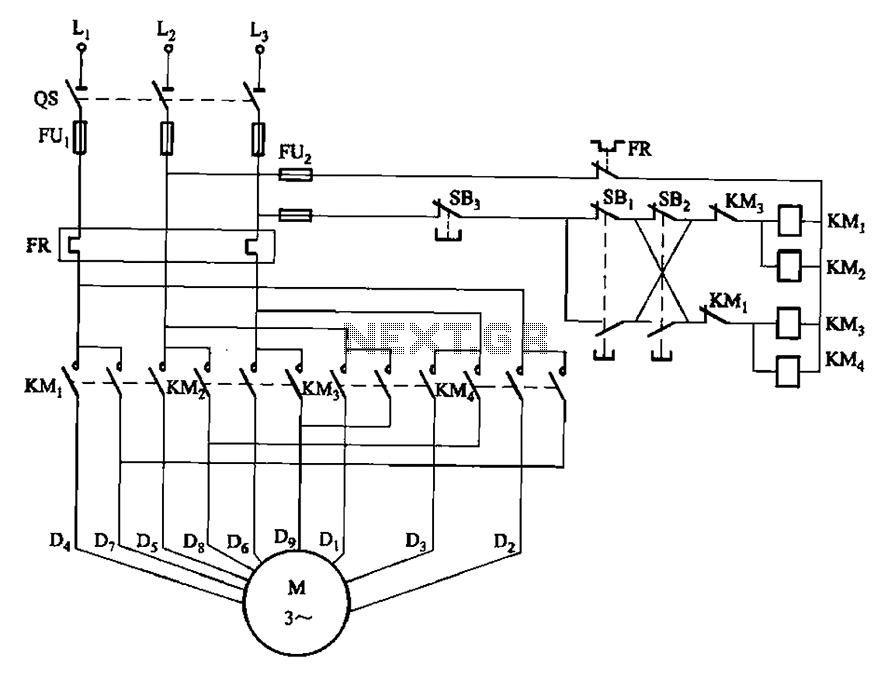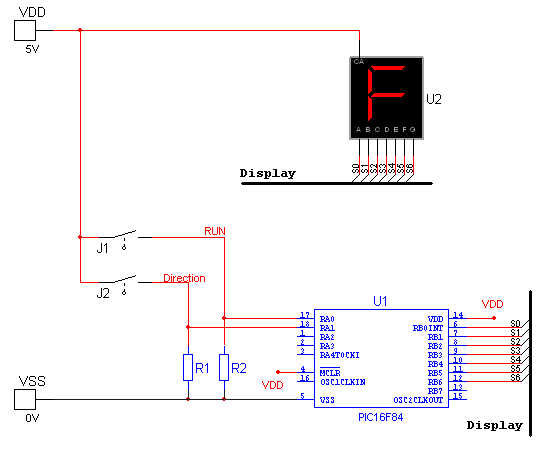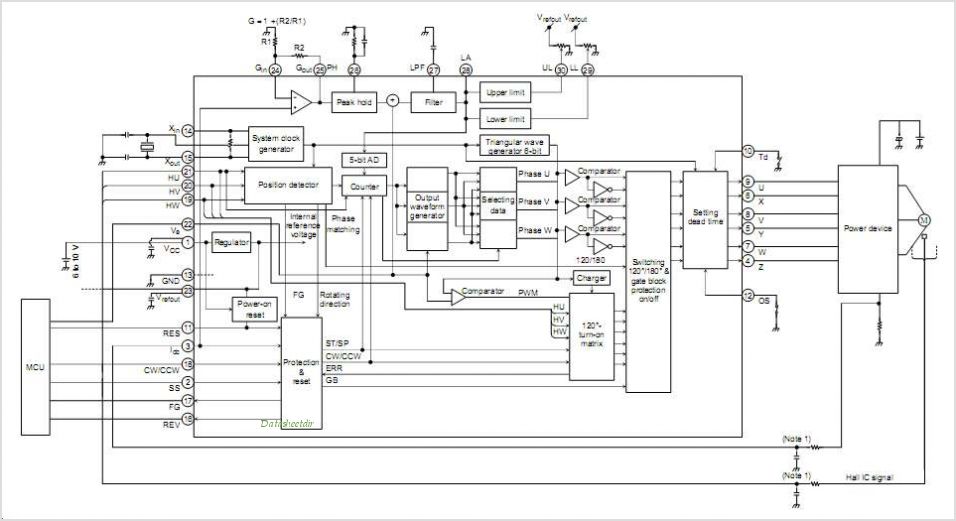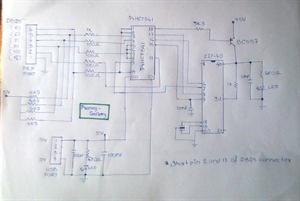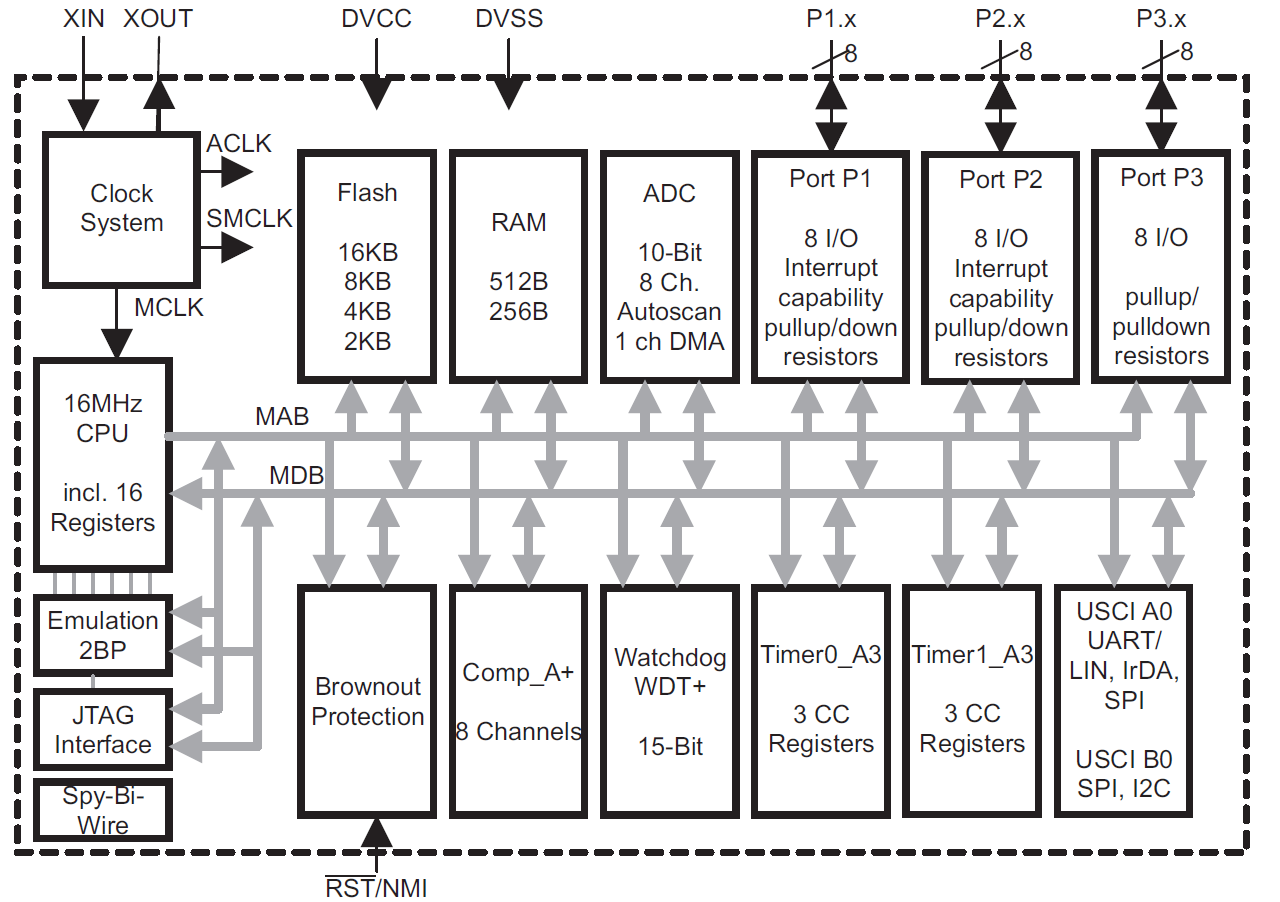
Unipolar 4 Phase Stepper Motor Controller
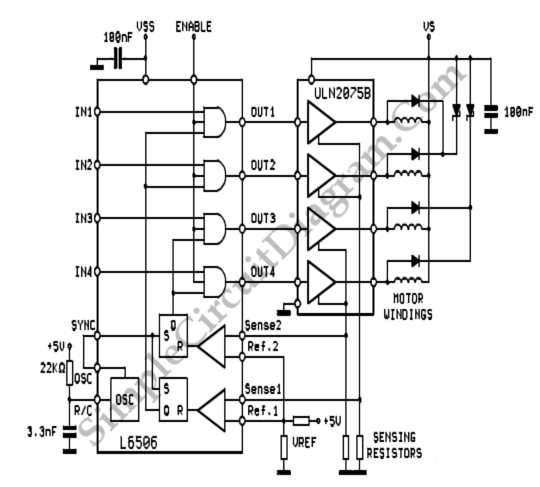
To sense and control the current in stepping motors and other similar devices, a linear integrated circuit such as the L6506 can be utilized. This chip set enables the formation of a constant current output.
The L6506 is a versatile linear integrated circuit specifically designed for motor control applications, particularly in driving stepper motors. It operates by regulating the current flowing through the motor windings, ensuring that the current remains within specified limits to prevent overheating and damage to the motor. The device features a built-in current sensing mechanism, which allows for real-time monitoring of the motor current.
The L6506 typically includes several key components such as an operational amplifier, a reference voltage source, and a feedback loop. The operational amplifier compares the sensed current with a reference value set by an external resistor. If the sensed current exceeds the reference, the feedback mechanism adjusts the output voltage to maintain the desired current level.
In practical applications, the L6506 can be integrated into a larger control circuit that may include microcontrollers for precise control of stepping motors. By adjusting the reference voltage, users can modify the current output to suit different motor specifications or operational requirements. This adaptability makes the L6506 ideal for applications ranging from 3D printers to CNC machines, where precise control over motor performance is critical.
Additionally, the L6506 can be configured to operate in various modes, such as constant current mode or voltage mode, depending on the specific requirements of the application. This flexibility, combined with its robust performance characteristics, makes it a popular choice among engineers working with motor control systems. Proper thermal management and circuit layout are essential when implementing the L6506 to ensure reliable operation and to maximize the lifespan of both the IC and the motor being controlled.To sense and control the current in stepping motors and other similar devices, we can use a linear integrated circuit like L6506. The chip set forms a constant.. 🔗 External reference
The L6506 is a versatile linear integrated circuit specifically designed for motor control applications, particularly in driving stepper motors. It operates by regulating the current flowing through the motor windings, ensuring that the current remains within specified limits to prevent overheating and damage to the motor. The device features a built-in current sensing mechanism, which allows for real-time monitoring of the motor current.
The L6506 typically includes several key components such as an operational amplifier, a reference voltage source, and a feedback loop. The operational amplifier compares the sensed current with a reference value set by an external resistor. If the sensed current exceeds the reference, the feedback mechanism adjusts the output voltage to maintain the desired current level.
In practical applications, the L6506 can be integrated into a larger control circuit that may include microcontrollers for precise control of stepping motors. By adjusting the reference voltage, users can modify the current output to suit different motor specifications or operational requirements. This adaptability makes the L6506 ideal for applications ranging from 3D printers to CNC machines, where precise control over motor performance is critical.
Additionally, the L6506 can be configured to operate in various modes, such as constant current mode or voltage mode, depending on the specific requirements of the application. This flexibility, combined with its robust performance characteristics, makes it a popular choice among engineers working with motor control systems. Proper thermal management and circuit layout are essential when implementing the L6506 to ensure reliable operation and to maximize the lifespan of both the IC and the motor being controlled.To sense and control the current in stepping motors and other similar devices, we can use a linear integrated circuit like L6506. The chip set forms a constant.. 🔗 External reference
